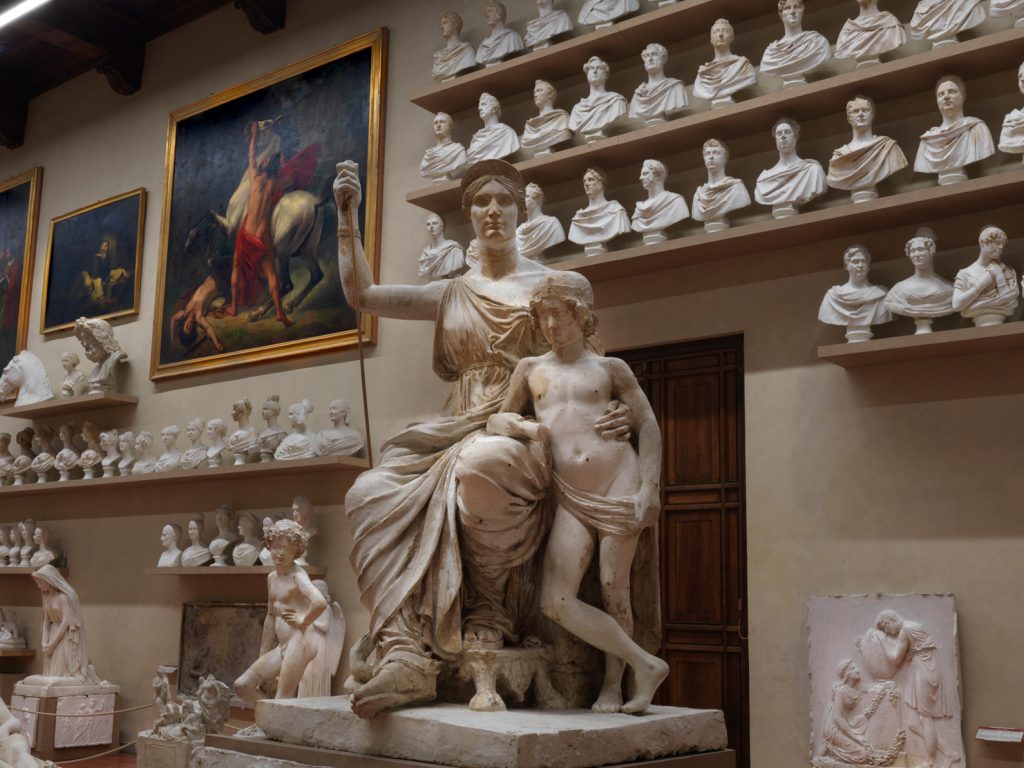Monument to Elisa Baciocchi
Lorenzo Bartolini
SCULPTURE
Data sheet
- Author: Lorenzo Bartolini
- Date: 1808 - 1813
- Collection: SCULPTURE
- Technique: Plaster model
- Dimensions: 228x136x119 cm
- Inventory: Inv. Sculture 1181
Image gallery
L'opera
Thanks to a prolonged stay in Paris as a young man, Bartolini worked on important commissions for Napoleon and his family. In Tuscany, Elisa Baciocchi (1777–1820) was one of his greatest admirers. In addition to official portraits for her and her closest relatives, in 1808 he began working on a major, and ill-fated, monument to the emperor’s sister, probably intended for a piazza in Carrara. In the Gipsoteca of the Galleria dell’Accademia di Firenze, there is a plaster sculpture group with the name “The Magnamity of Elisa, Grand Duchess of Tuscany”, in which Baciocchi is portrayed as Minerva with her arm encircling a personification of kind a spirit called a “Genius”. The latter holds a scroll in his hand, probably symbolising the new laws issued by the grand duchess. Elisa is portrayed seated, holding a sceptre in one hand and wearing a diadem on her head; like the goddess, there is a serpent at her feet. Work on the sculpture was interrupted by the Restoration and left incomplete. When Elisa died in Trieste in 1820, Felice Baciocchi asked Bartolini to transform the sculpture into a funerary monument for his wife. When the marble version was finished, it was, however, never brought to the church of San Petronio in Bologna, and was instead sold by the Baciocchi to Massimiliano Malvezzi Angelelli, who installed it in the cemetery of the Certosa of Bologna as a family tomb.
Bartolini worked on the sculpture at length, meeting the patrons’ requests and adapting the subject to the new circumstances, as we know from a few documents and drawings from the time.
















